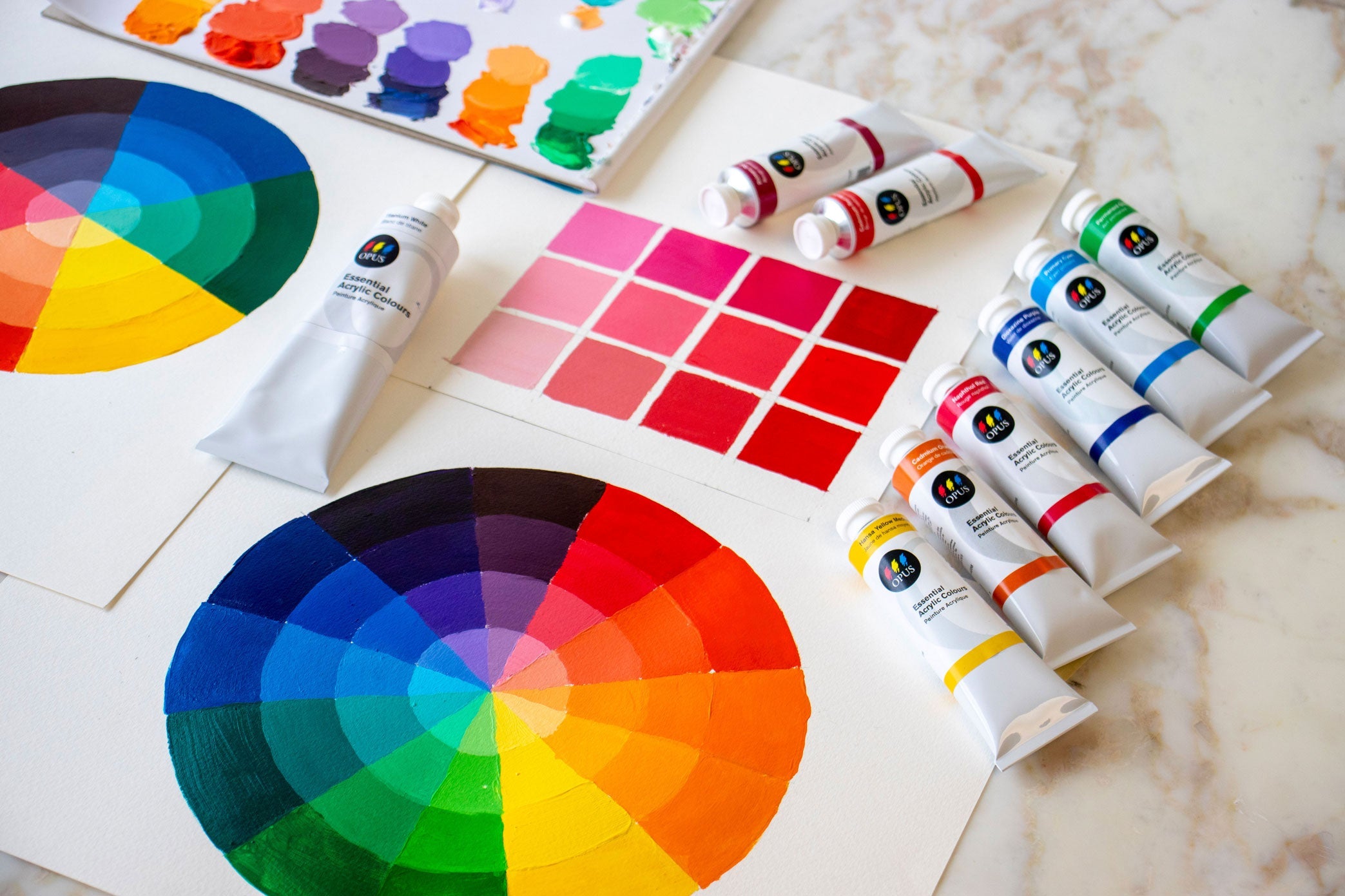
Building a Colour Wheel with Opus Essential Colours
Welcome to the world of colour, where creativity meets clarity! A colour wheel is an essential tool for artists, and you don't need to be a colour theory expert to start using it. If you find your paintings are lacking that vibrant punch or if mixing colours feels like a mystery, let's simplify things together with Opus Essential Paints.
In this guide, we'll explore the basics of building a colour wheel using Opus Essential Paints. We’ll dive into primary colours, mix up some secondary shades, and enhance your palette with tertiary tones. Whether you’re new to colour mixing or a seasoned artist looking for fresh inspiration, this guide is designed to help you experiment with confidence.
Warm or Cool Colours
Artists have their preferences—some might choose a cool, semi-violet red, while others prefer a warm red-orange. In the image to the left, you can see the wide variations between the warmth across three reds. Each of these would result in a significantly different colour wheel. Try experimenting with mixing a colour wheel with a warm red, like Cadmium Red Medium (on the left column of colour swatches), and compare it to a colour wheel created with a cool red like Primary Red (on the right column of colour swatches). Here we've mixed them out with a bit of Titanium White to demonstrate how their warmth registers.
Many artists use a combination of both, known as a split-primary palette, to achieve a broader range of mixes. It’s all about finding what works best for your artistic style and experimenting with different combinations!

What is the Colour Wheel?
The colour wheel is a visual masterpiece that illustrates how colours relate to one another. Isaac Newton first mapped out the colour spectrum in a circular format to showcase these interactions. The colour wheel is divided into three main categories: primary, secondary, and tertiary colours.
While the full spectrum of colours can be as complex as your imagination allows, mastering these three categories is all you need to create a stunning palette and perfect your colour mixing skills.
Choosing Opus Essential Primary Colours

Primary colours are your creative foundation: red, yellow, and blue. These are the building blocks for all other colours on the wheel. True primaries are unique hues that can't be mixed from other colours, and they form the basis of your palette.
Mixing Opus Essential Secondary Colours

Secondary colours are created by mixing two primary colours together. You’ll get orange by blending red and yellow, green by mixing blue and yellow, and violet by combining red and blue.
Start with equal parts of each primary colour to achieve a true secondary colour. Adjusting the ratios can lead to tertiary colours—those lovely hues between primary and secondary colours. Remember, a 1:1 ratio is a great starting point, but some pigments are more potent, so a little goes a long way!
To save time and maintain consistency, consider adding pre-made secondary colours from Opus Essential Paints to your palette. Our range of professional watercolours, oils, and acrylics includes all the secondary colours you need.
Exploring Tertiary Colours with Opus Essential Paints

Tertiary colours sit between primary and secondary hues on the colour wheel. These are created by blending a primary colour with a secondary colour. For instance, mixing red with orange results in red-orange, while yellow and orange make yellow-orange.
Artists love to experiment, so feel free to play around with different ratios and combinations when making your own colour wheel. To keep it simple, you can start with a 2:1 ratio of primary colours or mix secondary with primary hues.
Get Creative with Colour
Colour theory is both a science and an art, and while understanding it can enhance your work, remember there’s no such thing as ‘wrong’ colour. Your palette should reflect your personal style and preferences. Have fun, experiment boldly with your colour wheel, and let your colours shine!
Ready to dive into the colourful world of Opus Essential Paints? Explore our ranges of acrylic, fluid acrylic, watercolours, and oils, and let your creativity flow with every brushstroke.

